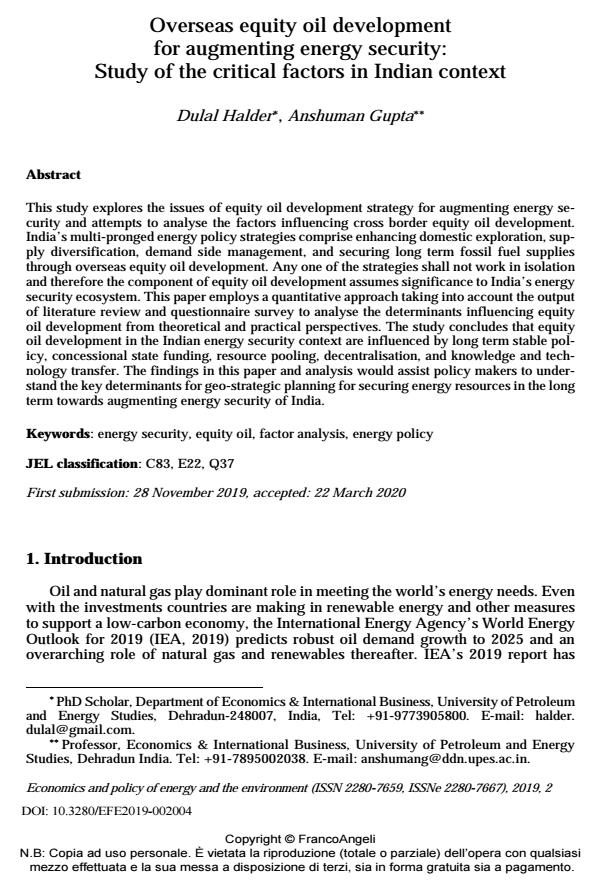Overseas equity oil development for augmenting energy security: Study of the critical factors in Indian context
Journal title ECONOMICS AND POLICY OF ENERGY AND THE ENVIRONMENT
Author/s Dulal Halder, Anshuman Gupta
Publishing Year 2020 Issue 2019/2
Language English Pages 23 P. 75-97 File size 243 KB
DOI 10.3280/EFE2019-002004
DOI is like a bar code for intellectual property: to have more infomation
click here
Below, you can see the article first page
If you want to buy this article in PDF format, you can do it, following the instructions to buy download credits

FrancoAngeli is member of Publishers International Linking Association, Inc (PILA), a not-for-profit association which run the CrossRef service enabling links to and from online scholarly content.
This study explores the issues of equity oil development strategy for augmenting energy security and attempts to analyse the factors influencing cross border equity oil development. India’s multi-pronged energy policy strategies comprise enhancing domestic exploration, supply diversification, demand side management, and securing long term fossil fuel supplies through overseas equity oil development. Any one of the strategies shall not work in isolation and therefore the component of equity oil development assumes significance to India’s energy security ecosystem. This paper employs a quantitative approach taking into account the output of literature review and questionnaire survey to analyse the determinants influencing equity oil development from theoretical and practical perspectives. The study concludes that equity oil development in the Indian energy security context are influenced by long term stable policy, concessional state funding, resource pooling, decentralisation, and knowledge and technology transfer. The findings in this paper and analysis would assist policy makers to understand the key determinants for geo-strategic planning for securing energy resources in the long term towards augmenting energy security of India.
Keywords: Energy security, equity oil, factor analysis, energy policy
Jel codes: C83, E22, Q37
Dulal Halder, Anshuman Gupta, Overseas equity oil development for augmenting energy security: Study of the critical factors in Indian context in "ECONOMICS AND POLICY OF ENERGY AND THE ENVIRONMENT" 2/2019, pp 75-97, DOI: 10.3280/EFE2019-002004